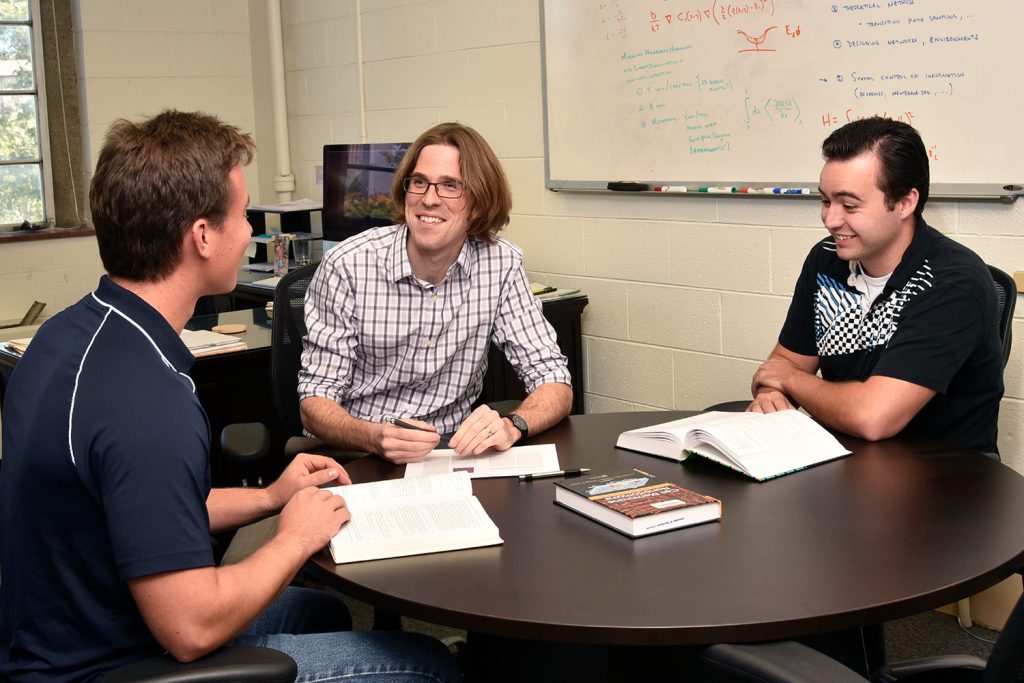Photo: Steven Abel (center) discusses projects with students (from left) Paul Mlynarczyk and Rob Pullen.
Assistant Professor Steven Abel has always felt destined to become a chemical engineer. He follows in the footsteps of his father, who was a petroleum engineer, and Abel had early and positive exposure to the field of engineering.
“I used to enjoy looking through my dad’s engineering books and trying to decipher the equations,” Abel said. “I wrote an essay in the 9th grade entitled ‘Why I want to be a chemical engineer.’”
Abel was born and grew up in the suburbs of Houston, Texas. His degree work at Rice University in Houston included a bachelor of science in chemical physics, a bachelor of science in mathematics, and a bachelor of science in physics.
Abel received his PhD in chemical engineering from Stanford University, and after graduate school was a postdoctoral associate at the Massachusetts Institute of Technology. He joined CBE faculty as an assistant professor in 2013.
CBE is a vibrant department with an active research program, and I felt a connection with the faculty here. The department has strengths in both biomolecular engineering and computational research, two areas that my research spans.”
Abel’s group uses theoretical and computational methods to understand how biological cells interact with their environment. A great deal of the group’s interest is motivated by trying to understand how immune cells, such as T cells and B cells, identify and respond to pathogens. They focus largely on problems involving signal transduction (how information is propagated through a cell), cell membranes, and the cytoskeleton.
“For example, we would like to gain a deeper fundamental understanding of cell membranes, how they are spatially organized, and how their mechanical properties influence a cell’s behavior,” Abel said. “The cell membrane is the part of a cell that controls the cell’s interactions with its environment–what material and information goes in and out, etc. A better understanding of membrane organization could impact a range of disciplines, ranging from immunology to drug design to the design of biomimetic materials.”
Abel enjoys interacting with students and his colleagues in the CBE department as well as working on a number of promising collaborations with individuals in other departments at UT and at Oak Ridge National Laboratory. In the future, Abel would like to impact the fields of cell biology and synthetic biology by contributing fundamental understanding of cellular processes occurring near membranes. He also looks forward to graduating his first class of PhD students and having them contribute to the scientific/engineering community.
“I also hope to expand the role of theory and computation in the area of biomolecular engineering and establish collaborations both inside and outside of the department,” Abel added.
Abel received the CBE Outstanding Teaching Award this year, and he is also a member of the American Institute of Chemical Engineers and the Biomedical Engineering Society.
Abel is an accomplished cellist, and he was the principal cellist of the Stanford Symphony for several years. A highlight of his time with the group included a tour of New Zealand and Australia, with a concert at the Sydney Opera House.
In his time away from campus, Abel and his family enjoy the outdoors, including visits to parks, camping, and hiking.
